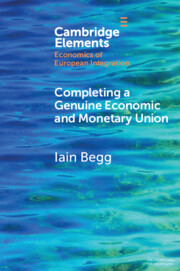Element contents
Completing a Genuine Economic and Monetary Union
Published online by Cambridge University Press: 26 January 2023
Summary
Keywords
- Type
- Element
- Information
- Online ISBN: 9781108963503Publisher: Cambridge University PressPrint publication: 23 February 2023
References
- 3
- Cited by



